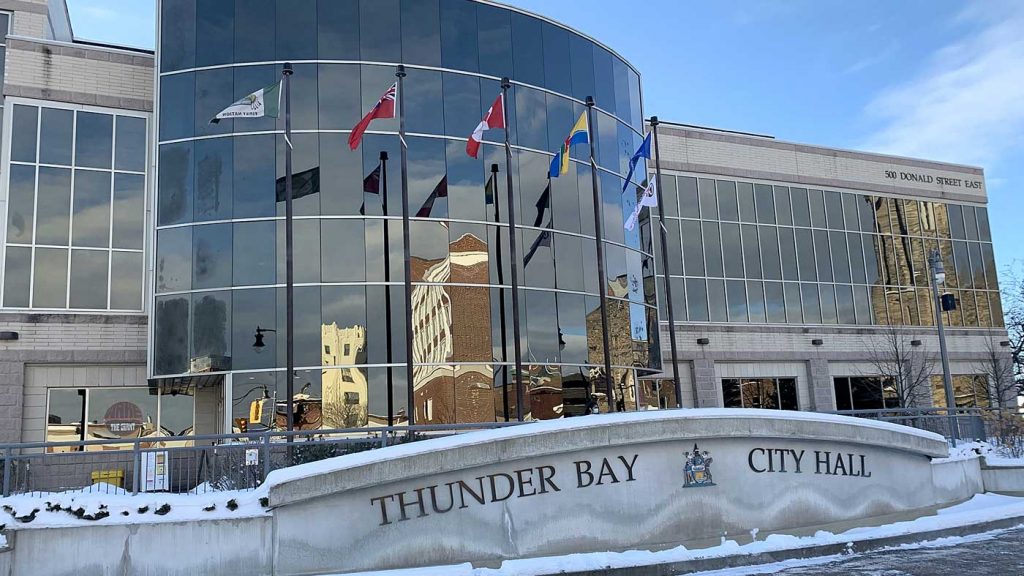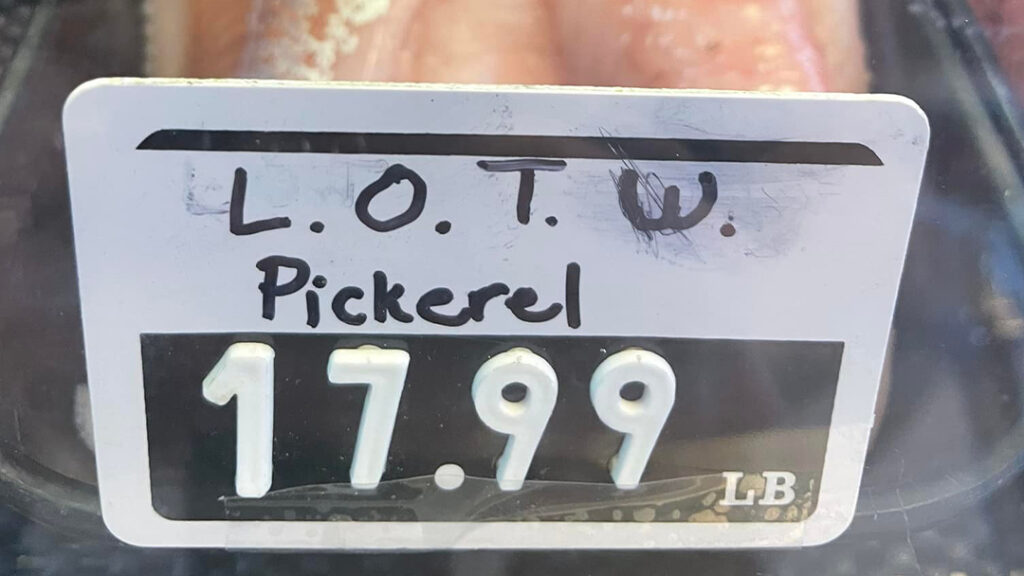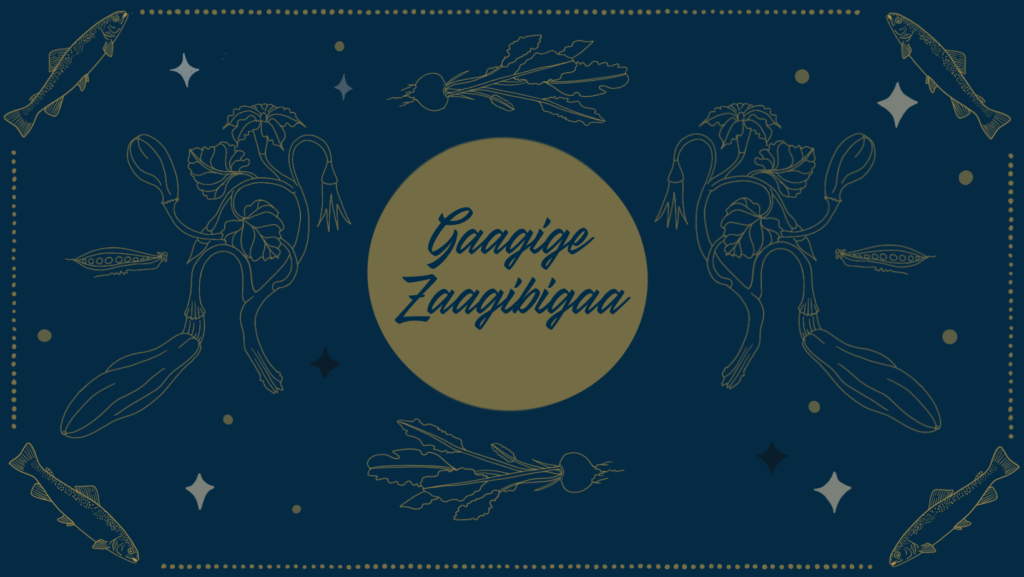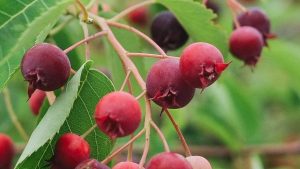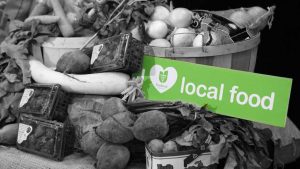Forest and
Freshwater Foods
Pillar Navigation
- What Are the Issues Around Forest and Freshwater Foods?
- Measures of our region’s knowledge of forest and freshwater foods
- Measures of protecting and conserving forest and freshwater foods ecosystems
- Measures of a diverse and sustainable forest and freshwater foods economy
- What Do These Indicators Tell Us?
- Highlights
- References
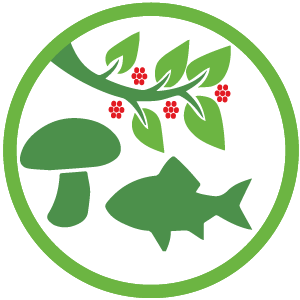
GOAL:
Increase our region’s knowledge of available forest and freshwater foods and their sustainable harvest, protect and conserve forest and freshwater food ecosystems, and support a diverse and sustainable forest and freshwater foods’ culture and economy within the region. This includes both harvesting for personal consumption and the development of commercial opportunities.
What Are the Issues Around Forest and Freshwater Foods in the Thunder Bay Area?
Forest and freshwater foods — such as blueberries, mushrooms, tea, wild rice, fiddleheads, medicinal plants, wild fish and game — have been integral to the Northwestern Ontario food system for thousands of years. The activities involved in procuring forest and freshwater foods promote physical activity and maintain cultural traditions and connections with the natural environment.
Prior to European settlement Indigenous peoples lived in balance with the natural world, meaning there was a deep metaphysical connection with the forest and its freshwater foods, Indigenous people still possess this traditional ecological knowledge that enables them to live in balance with the natural world. The knowledge that Indigenous peoples held of forest and freshwater foods was shared with the European settlers which was integral to their survival. Today, both Indigenous and settler peoples continue to depend on local forests and freshwaters for food; hunting, fishing and gathering remain an important part of northern culture. Forest and freshwater foods offer opportunities to work with nature, protect ecosystems, increase Indigenous food sovereignty, and support people’s livelihoods.
Despite the importance of forest and freshwater foods to our food system, there are significant challenges to the integrity of this food source. For example, industrial development has negatively impacted fish and wildlife habitats while urban, suburban and rural development encroaches on forests, rivers, and other productive spaces.
Harvesting foods can contribute to a healthy and active lifestyle, foster a stronger connection to nature, maintain cultural traditions, and support intergenerational relationships. Practicing personal harvesting of forest and freshwater foods often comes at a lower cost than store-bought food, particularly for plant and mushroom foraging. Communities in the Thunder Bay Area live in an eco-zone that hosts a high diversity of plants and animals, many of which can be used for food.
Protecting and promoting forest and freshwater food systems can contribute to overall ecosystem health by reducing greenhouse gas emissions and improving resilience in the face of climate change. The health of forest and freshwater food systems is also a good indicator of the ecological integrity of ecosystems overall. For these reasons, it is imperative to protect boreal forests and watersheds, as these ecosystems are the basis for hunting, fishing and gathering activities.
Nationally and provincially, there is increased demand for forest and freshwater foods. Within the Thunder Bay Area, forest and freshwater foods are harvested in parks, green spaces, and other public and private spaces. Forest and freshwater foods can be found for sale at local farmers’ markets, grocery stores, restaurants, and road-side vendors.
Commercially, forest and freshwater foods present opportunities for high value foods and value-added products. The potential of this industry is great and is evidenced by the success of forest and freshwater foods sectors in other provinces (BC and Quebec most notably). There is likely limited potential for commercial development on lands within the Thunder Bay Area because rural, suburban, and urban development affects the ecology of otherwise productive areas (e.g., forests, lakes, rivers). In terms of commercial opportunities, the Thunder Bay Area population still presents a significant market for commercial producers of forest and freshwater foods, as well as throughout Northwestern Ontario. Seizing this opportunity will be advantageous to ensuring a more resilient food system within the region.
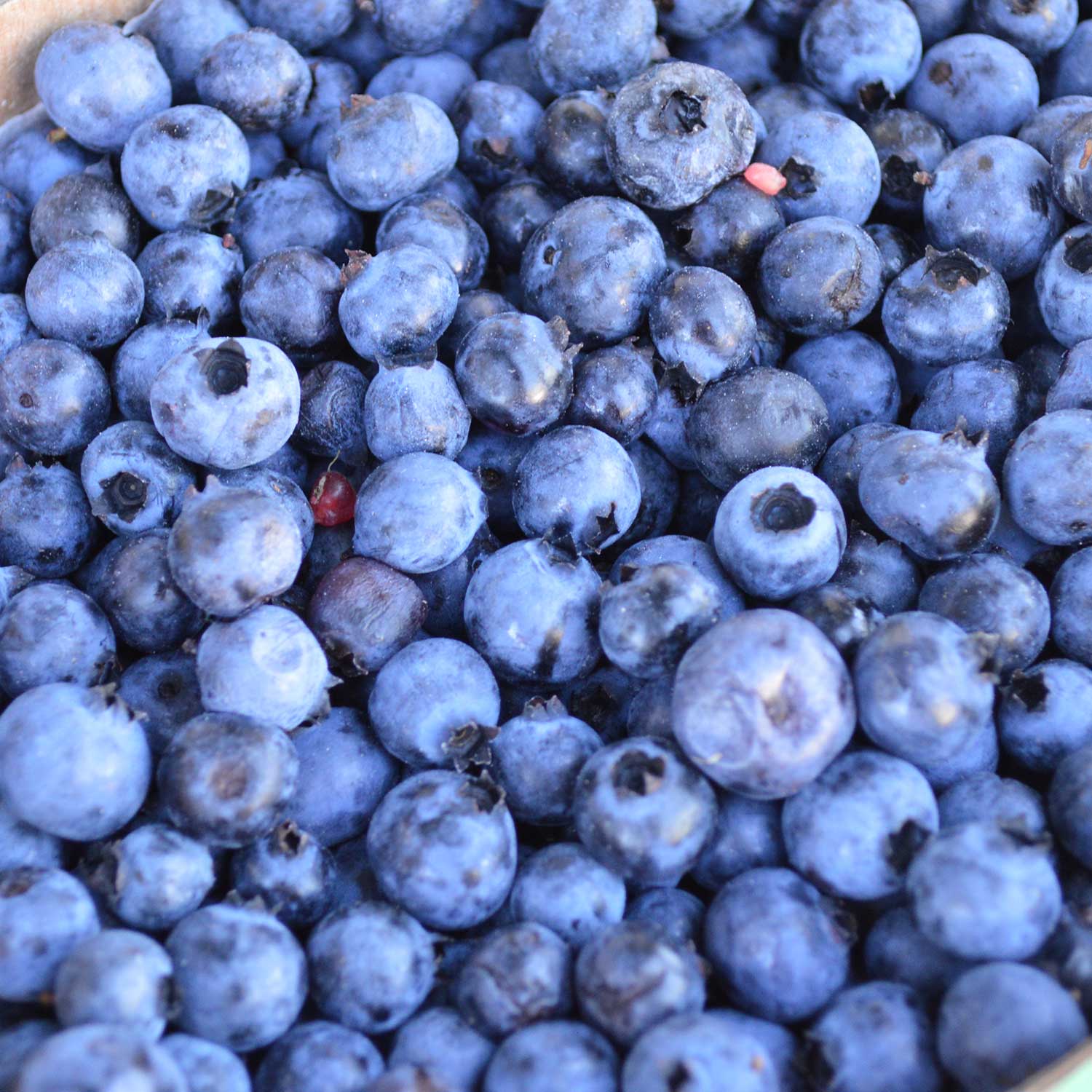
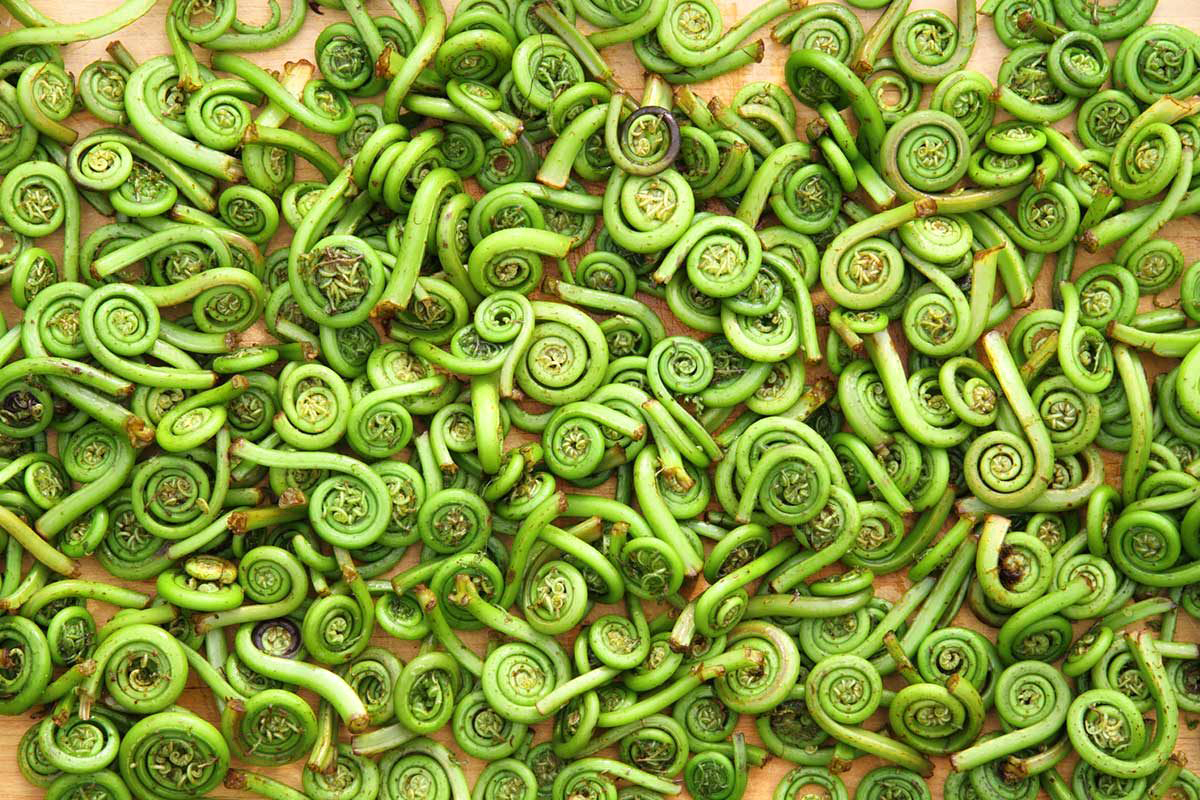
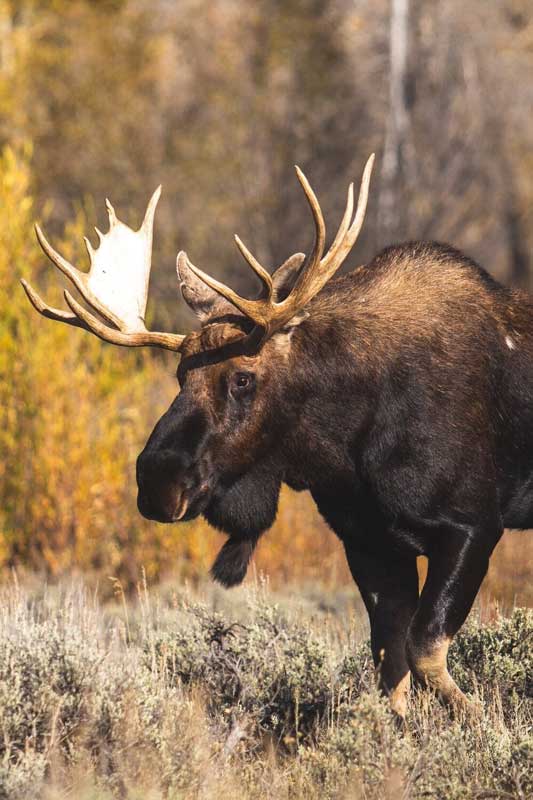
Measures of our region’s knowledge of forest and freshwater foods
Number of sustainable harvesting workshops (2022)
34
Measured: 2022
Source: Thunder Bay + Area Food Strategy. (2022). Community Food Security Database. 1
Number of participants in sustainable harvesting workshops (2022)
774
Measured: 2022
Source: Thunder Bay + Area Food Strategy. (2022). Community Food Security Database. 2
Number of groups that run sustainable harvesting workshops (2022)
5
Measured: 2022
Source: Thunder Bay + Area Food Strategy. (2022). Community Food Security Database. 3
Measures of protecting and conserving forest and freshwater foods ecosystems
Number of conservation areas managed by the Lakehead Region Conservation Authority (2022)
8
Measured: 2022
Source: Lakehead Region Conservation Authority. (2022). http://www.lakeheadca.com/conservation/conservation-areas 4
Number of forest management properties managed by the Lakehead Region Conservation Authority (2022)
3
Measured: 2022
Source: Lakehead Region Conservation Authority. (2022). http://www.lakeheadca.com/conservation/conservation-areas 5
Number of hectares owned by the Lakehead Region Conservation Authority (2022)
2500
Measured: 2022
Source: Lakehead Region Conservation Authority. (2022). http://www.lakeheadca.com/conservation/conservation-areas 6
Forest Foods That Are Commonly Harvested, Fished or Hunted
- Beaked Hazel
- Bear
- Birch
- Blueberries
- Bunchberries
- Camomile
- Cattails
- Chokecherries
- Clover
- Daisy
- Dandelion
- Deer
- Fiddleheads
- Fireweed
- Goldenrod
- Grouse
- Highbush Cranberries
- Horseradish
- Horsetail
- Juniper Lake Cisco (also known as Lake Herring)
- Lake Salmon
- Lake Trout
- Lake Whitefish
- Lambs Quarters
- Mint
- Moose
- Mushrooms (various varieties)
- Pine
- Plantain
- Raspberries
- Sarsaparilla
- Saskatoons
- Spruce
- Stinging Nettle
- Strawberries
- Walleye
- Wild Rose
- Willow
- Yarrow
Personal, Commercial and Recreational Harvesting
Personal harvesting is any harvesting activity primarily intended to benefit individuals or households for sustenance. Personal harvesting can include economic activity provided it is limited to the household level (e.g., household food economy, food sharing, etc.). An example of personal harvesting could be the harvest of raspberries or fish for personal consumption.
Commercial harvesting is any harvesting activity carried out for the specific purpose of generating economic benefit from the sale or trade of the harvested food. Commercial harvesting tends to occur in greater quantities than personal harvesting, although not always. An example of this could be the harvest and sale of wild blueberries or various varieties of mushroom.
Recreational harvesting includes harvesting activities that are non-commercial in nature, and for a primary purpose other than consumption. Examples of this might include sport fishing or harvesting for educational purposes.
Measures of a diverse and sustainable forest and freshwater foods economy
Number of established forest and freshwater foods businesses (2022)
5+
Measured: 2022
Source: Thunder Bay + Area Food Strategy. (2022). Community Food Security Database. 8
Moose population in northwestern Ontario (2022)
46,000
Measured: 2020
Source: Darby, Laura. (2022). Ontario Ministry of Natural Resources and Forestry. Personal Communication. 10
Estimated number of moose harvested in the Thunder Bay Wildlife Management Unit (WMU, 13) (2022)
28
Measured: 2020
Source: Darby, Laura. (2022). Ontario Ministry of Natural Resources and Forestry. Personal Communication. 11
Estimated number of white-tailed deer harvested in the Thunder Bay Wildlife Management Unit (WMU, 13) (2022)
1704
Measured: 2020
Source: Darby, Laura. (2022). Ontario Ministry of Natural Resources and Forestry. Personal Communication. 12
Estimated number of black bear harvested in the Thunder Bay Wildlife Management Unit (WMU, 13) (2022)
147
Measured: 2020
Source: Darby, Laura. (2022). Ontario Ministry of Natural Resources and Forestry. Personal Communication. 13
Yearly catch number for Whitefish in Lake Superior (2022)
119,218
Measured: 2020
Source: Berglund, Eric. (2022). Ministry of Natural Resources and Forestry. Personal Communication. 14
Yearly catch numbers for Cisco (Herring) in Lake Superior (2022)
136,243
Measured: 2020
Source: Berglund, Eric. (2022). Ministry of Natural Resources and Forestry. Personal Communication. 15
Yearly catch numbers for Lake Trout in Lake Superior (new for 2022)
15,556
Measured: 2020
Source: Berglund, Eric. (2022). Ministry of Natural Resources and Forestry. Personal Communication. 16
What do the 2022 Forest and Freshwater Foods Indicators Tell Us?
The Thunder Bay Region is home to grasslands, meadows, numerous freshwater lakes and is surrounded by the Boreal forest which provides an abundance of wild game, fish, berries, mushrooms and much more. Forest and freshwater foods present a potential growth area that could positively impact issues of climate and sustainability, responsible harvesting, Indigenous food sovereignty, and economic and social opportunities for communities across Northwestern Ontario.
The Indigenous food sovereignty movement has continued to evolve and forest and freshwater foods play a central role in this work. Efforts are being made to promote the recognition of forest and freshwater foods as essential food sources for Anishinaabe people. In addition, Indigenous people continue to assert self-determination over their lands and rights to be able to hunt, harvest and fish on their traditional territories. Balancing the acquisition of forest and freshwater foods with conservation efforts should be prioritized to protect these food sources and ensure their long-term sustainability. Protecting forest and freshwater food systems and realizing Indigenous food sovereignty are essential for the long-term health of our region and its populations.
There is continued interest among people in the Thunder Bay Area to learn about what foods are available in our region and how to harvest them sustainably. The Lakehead Regional Conservation Authority offers mushroom foraging workshops annually, and recently, the Boreal Museum has begun offering wild-harvesting and sustainable foraging workshops. Since 2017, the Indigenous Food Circle and Gaagige Zaagibigaa have been hosting numerous food foraging, harvesting and traditional skills (such as hide tanning and fish smoking) workshops within Thunder Bay and across the Region.
As awareness of the value of wild-harvested foods grows, demand is increasing. These foods are most often shared informally, but some products are being sold through local shops, grocery stores and restaurants. This has led to the development of small businesses harvesting seasonal fresh products like local fiddleheads, berries and mushrooms, as well as processing foods like blueberry jam and foraged teas.
While forest and freshwater foods have been a core part of human diets from time immemorial, there is surprisingly little data available about forest and freshwater animal, plant and fish populations. There is a need to establish baseline data for monitoring the health of forest foods ecosystems in Northwestern Ontario as climate change becomes more of a visible threat in our area, monitoring forest and fresh water food becomes a necessary tool for climate protection and species rehabilitation.
For a combination of economic and conservation reasons, the Ontario Government does collect information on the numbers of large game (e.g., moose, deer, and bear) in order to adjust the numbers of hunting tags (or permits) that are issued during hunting season. In 2014, the overall population of moose was in decline in Northwestern Ontario and estimated to be 41,000. This led the Ministry of Natural Resources and Forestry to reduce the number of moose tags issued by 22% in an effort to repopulate. Fewer moose and tags available impacted people in and around Thunder Bay that hunt moose for food. But, the conservation efforts were a success because in 2021, there were an estimated 46,000 moose – about 5,000 more – in Northwestern Ontario.
Lake Superior and other inland freshwater lakes in the area are home to many species of fish. According to the Ministry of Natural Resources and Forestry, the harvest of Cisco, Lake Whitefish and Lake Trout (the top three commercial species) decreased between 2019 and 2020 by as much as 28%. 17 Some fish are harvested for personal use while some are harvested commercially and exported, mainly to the United States. Currently, there are two businesses that offer Great Lakes fish for sale to local markets. The Ontario Ministry of Natural Resources and Forestry also stocks a number of fish varieties including brook trout, rainbow trout and splake in area freshwater lakes.
Forest and Freshwater Foods Highlights
City seeks Indigenous-led partners in food
The purchasing model developed by the City of Thunder Bay has built-in criteria that considers more than just price, assigning value to diversity, inclusion, social justice and sustainability.
Processor/ retailer partnership makes regional fish more available
Eat the Fish, East Coast Seafood A new partnership between seafood retailer East Coast Seafood and local fish processor Eat the Fish has made locally-caught fish more accessible to the region. Typically, local commercial fishermen have sold their product to...
Gaagige Zaagibigaa
a community-led initiative that is bringing Indigenous practitioners, funders and other stakeholders together to develop a food system planning and resourcing process that strengthens Indigenous food sovereignty and food security
What is the Indigenous Food Sovereignty Movement?
Indigenous food sovereignty is fundamentally achieved by upholding the sacred responsibility to nurture healthy, interdependent relationships with the land, plants and animals that provide people with food.
13 Moons Learning Resources
In 2020, a partnership between the Indigenous Food Circle, Thunder Bay District Health Unit and Lakehead University produced the Traditional Harvesting/ 13 Moons learning resources. The kit includes a poster, a video and an online interactive game, and is designed to help people begin to understand and reclaim seasonal, traditional practices around food.
Court Street Edible Food Forest
In 2014 Roots to Harvest and the City of Thunder Bay planted the city’s first urban food forest. Located at the parkette on Court Street, the food forest includes a range of fruit trees and berry bushes that, once fully grown, will become a place people can go to...
Local Food Act
On November 5, 2013, the Ontario Government passed the Local Food Act, which aims to foster local food economies in Ontario. Due to the advocacy efforts of Ontario Nature, the Ontario Government included forest and freshwater foods in the definition of local foods....
2022 Forest and Freshwater Foods References
- Thunder Bay + Area Food Strategy. (2022). Community Food Security Database.
- Thunder Bay + Area Food Strategy. (2022). Community Food Security Database.
- Thunder Bay + Area Food Strategy. (2022). Community Food Security Database.
- Lakehead Region Conservation Authority. (2022). http://www.lakeheadca.com/conservation/conservation-areas
- Lakehead Region Conservation Authority. (2022). http://www.lakeheadca.com/conservation/conservation-areas
- Lakehead Region Conservation Authority. (2022). http://www.lakeheadca.com/conservation/conservation-areas
- Boan, Julee. (2022). Ontario Nature. Personal Communication.
- Thunder Bay + Area Food Strategy. (2022). Community Food Security Database.
- Boan, Julee. (2022). Ontario Nature. Personal Communication.
- Darby, Laura. (2022). Ontario Ministry of Natural Resources and Forestry. Personal Communication.
- Darby, Laura. (2022). Ontario Ministry of Natural Resources and Forestry. Personal Communication.
- Darby, Laura. (2022). Ontario Ministry of Natural Resources and Forestry. Personal Communication.
- Darby, Laura. (2022). Ontario Ministry of Natural Resources and Forestry. Personal Communication.
- Berglund, Eric. (2022). Ministry of Natural Resources and Forestry. Personal Communication.
- Berglund, Eric. (2022). Ministry of Natural Resources and Forestry. Personal Communication.
- Berglund, Eric. (2022). Ministry of Natural Resources and Forestry. Personal Communication.
- Lake Superior Commercial Fishing Summary for 2020. Upper Great Lakes Management Unit, Lake Superior. Ministry of Natural Resources and Forestry. 2021


